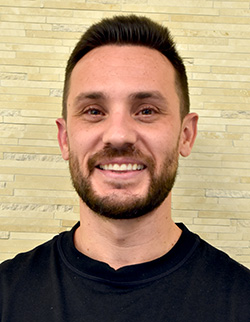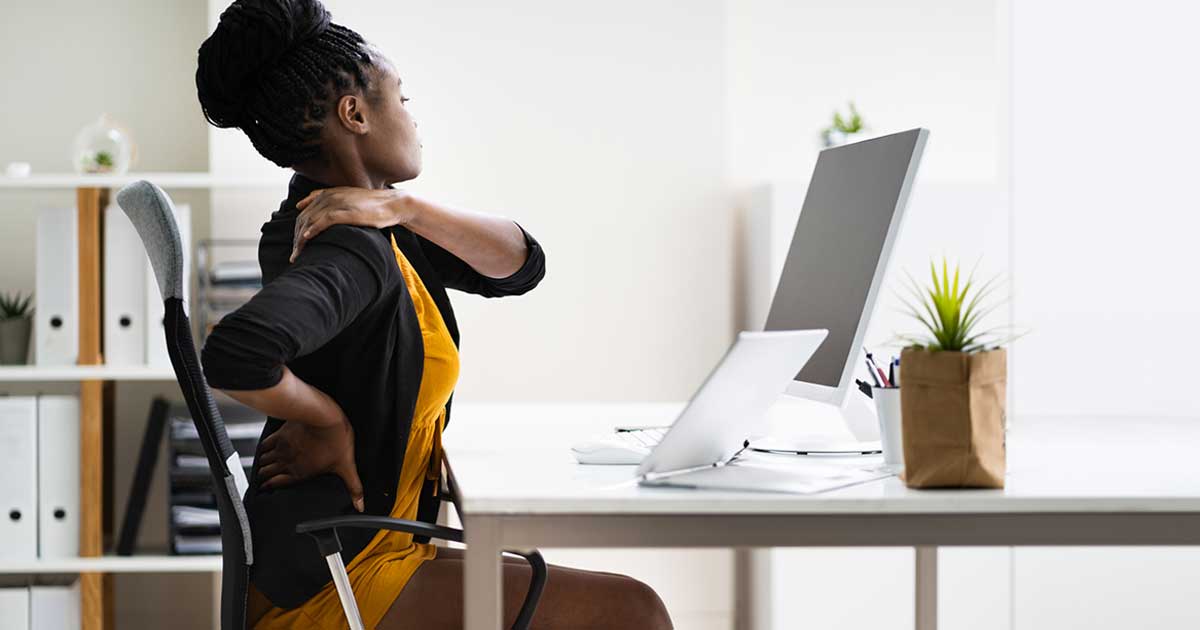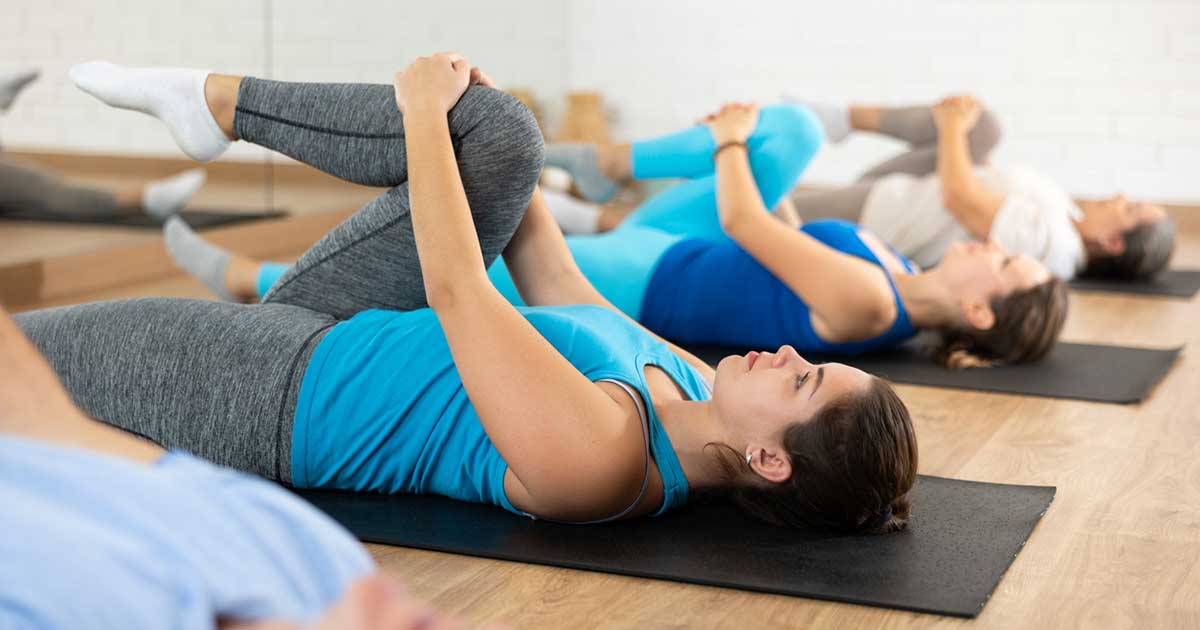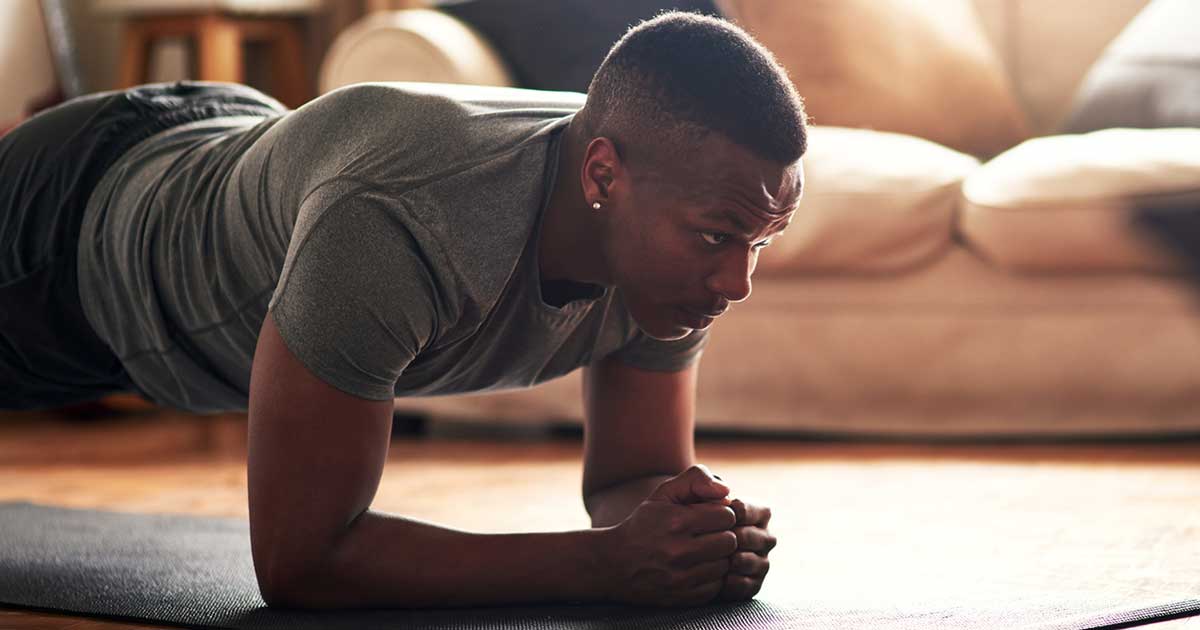The Best Core Exercises to Strengthen and Stretch
Advice to improve your movement, fitness, and overall health from the world's #1 in orthopedics.
Your core is one of the most important areas of your body. And we’re not just talking about your abs. The core encompasses all the muscles that extend from the ribcage to the pelvis: think pelvic floor, mid and upper back and abdomen. A weak core can lead not only to poor posture, but also to back, glute and hip pain as well as injuries to all those areas.
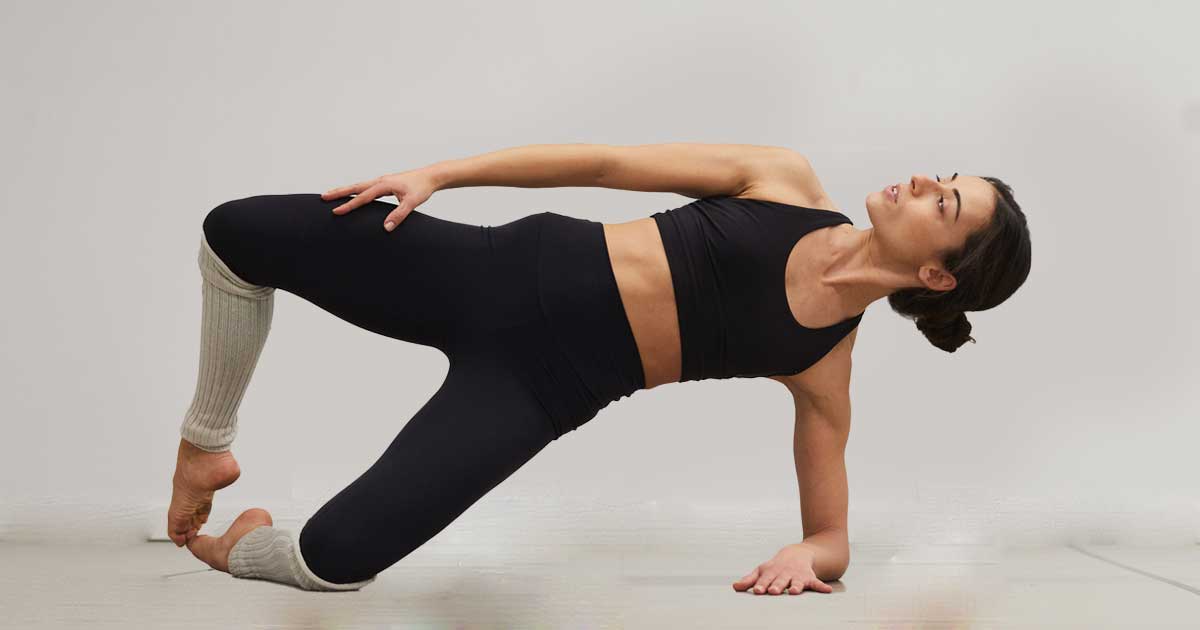
“Think of your core as a bridge,” says Timothy Coyle, MS, an exercise physiologist at HSS. “Its job is to help us transfer forces from one part of the body to another—lower to upper, side to side—and to provide stability when we create motion in our more mobile joints, like the shoulders, hips, ankles, and even the knees and elbows.”
That’s why we need a strong and flexible core. “How much weight we move around is important, but even more important is how we move it,” says Coyle.
Core Strengthening and Stretching Exercises
Coyle recommends the movements below to strengthen and stretch your core. How often to do these depends on your level of fitness. “If you’re dealing with tightness and core weakness, then the more often, the better, I say,” says Coyle.
Start by doing one set of each exercise every other day and build to two sets, he recommends. If you consider yourself to be in OK shape, use these as a warm-up for your day. “Priming your body to improve the quality of your daily movement is never a bad idea,” says Coyle. Finally, if you’ve been active for quite a while, this routine can be a good warm-up before a resistance training session, practice, or game.
3 Exercises for Core Strength
You’ll notice that there isn’t a crunch among these exercises. “Crunches have long been thought to give definition to the abs and so they’ve been recommended for a long time for the sake of vanity,” says Coyle. But now we know that core exercises that help stabilize and transfer forces between segments of our bodies are what’s really going to help keep us healthy and pain-free.
90-90 Iso Holds
- Lie on your back with your knees bent, feet planted on the floor, legs together, and hands placed gently at your sides.
- Raise your knees up so that your hips and thighs are at a 90-degree angle and your ankles are at about the same height as your knees.
- Make sure your back does not arch or come off the floor at all.
- Press into your thighs with your hands for up to 15 seconds.
- To increase the challenge or sensation in your core, place a yoga block, Pilates ring or foam roller between your hands and thighs.
- Lower your feet back to the ground.
- Repeat 1 additional time.
*If 15 seconds is too long, try going for 5 or 10 seconds, or bring your feet back to the ground and try the thigh press from that position.
Dead Bugs
- Lie on your back with your knees bent, feet planted on the floor, legs hip-width apart, and hands placed gently at your sides.
- Raise your knees up so that your hips and thighs are at a 90-degree angle and your ankles are at about the same height as your knees.
- Raise your arms straight up toward the ceiling.
- Brace your core so that your back is flat on the floor and stays there throughout the exercise.
- Extend your right leg forward while you raise your left arm overhead at the same time.
- Return your arm and leg to the starting position.
- Extend your left leg forward while you raise your right arm overhead at the same time.
- Repeat for a total of 10 times on each side.
Modified Side Plank with Clam Shells (with or without bands)
- Lie on your right side with your knees bent at 45 degrees with your hips, knees, ankles, and feet stacked on top of each other and your right elbow underneath your shoulder.
- Brace your right forearm on the floor.
- Lift your hips as high as possible as you raise your left knee toward the ceiling, keeping your feet together (like a clamshell).
- Squeeze your glutes forward as you lift.
- Lower your left leg and your hips back down.
- Repeat up to 10 times on this side, then switch to your left side.
- Once you’re comfortable with this move, you can put resistance bands above your knees to make the move more challenging.
3 Stretches to Improve Core Flexibility
Mobility in the core can extend to the surrounding joints—shoulders and hips especially, Coyle says. “The connective tissue that moves those joints is so intimately involved in our core,” he adds. Flexibility in these other areas helps prevent over-tightening in our core so when we perform moves that require strength, the correct muscles can better activate. On top of that, we’ll be able to perform core mobility exercises to a fuller extent if we have better motion in the surrounding joints, he says.
Supine Figure Four Stretch
- Lie on your back with your hands by your sides, knees bent, and feet flat on the floor.
- Lift your right leg and place your right ankle on top of your left knee.
- Keep your right foot flexed to protect the knee.
- Interlace your fingertips behind your left thigh.
- Use your right elbow to push the right thigh away from your body if you can reach without straining.
- Gently pull the left knee toward your chest. You should feel a stretch in the right glute but no pain anywhere.
- Hold for about 30 seconds.
- Release the left leg and place your right foot back down on the floor.
- Repeat on the other side for a total of 1 time each side.
Child’s Pose
- Kneel with the top of your feet resting on the floor, big toes touching each other and knees about hip-width apart.
- Lower your hips so that you’re sitting on your heels.
- Hinge at the hips as your torso lowers until it rests between your thighs.
- Walk your hands out in front of you as far as they can go, palms down and forehead on the floor (if possible).
- Relax as you reach forward and imagine your shoulder blades sinking toward the ground.
- Stay there as long as you feel comfortable.
- When you’re ready to come out, press through your tailbone to rise.
Half-Kneeling Hip Flexor Stretch with Overhead Reach
- Begin by kneeling on the floor.
- Bring your right leg in front of you so that your right thigh is parallel to the floor. Your knee should be bent at a 90-degree angle and your foot flat on the floor.
- Leave your left knee on the floor, making sure that your shin is pointing toward the back wall.
- Shift your weight forward until you feel a stretch through the front of the left thigh and groin.
- Reach your left arm up overhead and slightly toward the right as you feel your entire left side open up.
- Repeat on the opposite side, with your right knee down and left foot forward.
*Add a mat, pillow or pad on the ground if you need more comfort for your knees, Coyle says.
Published 11/27/2023

